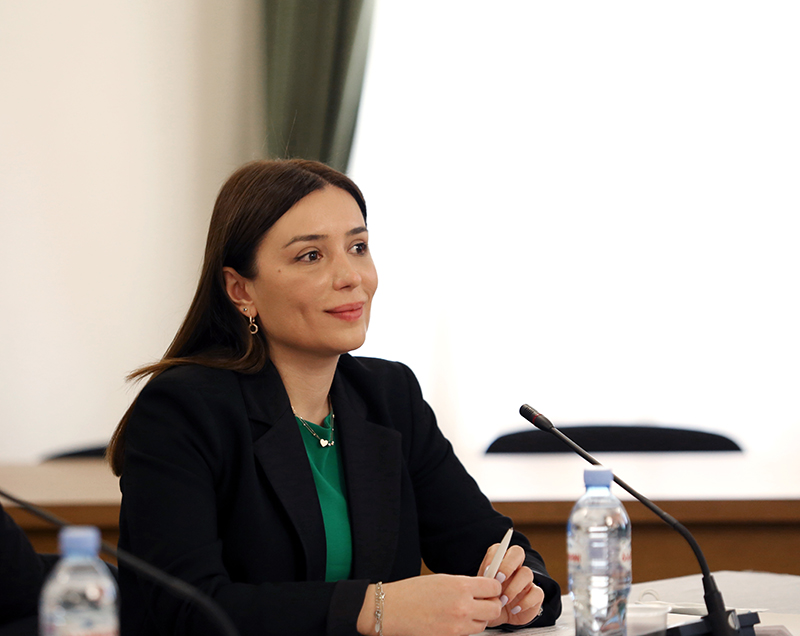EU Green Deal and Georgian Perspective
Author:
Megi Shubalidze, Environmental Protection Manager
UN Global Compact Network Georgia

Europe’s future depends on a sustainable planet, and EU countries are steadfastly committed to achieving climate neutrality by 2050, aligning with the Paris Agreement. At the forefront of this commitment is the European Green Deal (EGD), a comprehensive strategy launched in December 2019 by the European Commission. This ambitious initiative aims to guide the EU towards a green transition, fostering a fair, prosperous society with a modern and competitive economy.
The EGD emphasizes a holistic and cross-sectoral approach, recognizing that various policy areas must contribute to the overarching climate-related goal. Encompassing climate, environment, energy, transport, industry, agriculture, and sustainable finance, the package underscores the interconnectedness of these domains.
Key to the EGD’s success is its threefold agenda. First, the EGD strives for net-zero emissions by proposing specific strategies to reduce greenhouse gases across all sectors, with a primary focus on the energy sector, which accounts for over 75% of the EU-27’s total greenhouse gas emissions. The objective is to boost the share of renewable energy in the EU’s energy mix.
Secondly, the EGD aims to decouple economic growth from resource exploitation. Despite achieving emission reductions in the last decade, Europe remains a significant contributor to global resource consumption. This ambitious objective requires not only technological advancements but also a fundamental shift in lifestyles, communities, and societies.
The third goal of the EGD is to ensure an inclusive green transition, leaving no one behind. This is supported by the Just Transition Mechanism, allocating between €65 billion and €75 billion over the period 2021-2027 to address the socio-economic impacts of the transition.
The Green Agenda, as per the EGD guidelines, is structured around five pillars:
Climate action/decarbonization, encompassing climate, energy, and mobility.
Circular economy, addressing waste, recycling, sustainable production, and efficient resource use.
Biodiversity, aiming to protect and restore the natural wealth of the region.
Depollution, combatting pollution of air, water, and soil.
Sustainable food systems and rural areas.
Digitalization is identified as a key enabler for these pillars, aligning with the dual green and digital transition concept. Concrete actions, mechanisms, and financial instruments will support the objectives of these pillars.
The implementation of the EGD involves reviewing more than 50 European laws and redesigning public policies across eight policy areas: biodiversity, sustainable food systems, sustainable agriculture, clean energy, sustainable industry, building and renovating, sustainable mobility, eliminating pollution, and climate action.
The European Climate Law, adopted on March 4, 2020, is a pivotal element of the Green Deal. It elevates the EU’s 2030 and 2050 climate targets into law. Additionally, the European Climate Pact engages citizens and society in climate action, while the 2030 Climate Target Plan, part of the ‘Fit for 55’ package, aims to reduce net greenhouse gas emissions by at least 55% by 2030.
The ‘Fit for 55’ package, presented on July 14, 2021, outlines reforms to key policies, including the Effort Sharing Regulation, Carbon Border Adjustment Mechanism, EU Emissions Trading System, Renewable Energy Directive, Energy Efficiency Directive, and Energy Performance of Buildings Directive. This package is crucial in achieving the EU’s target of reducing net greenhouse gas emissions by at least 55% by 2030 compared to 1990 levels.
The European Green Deal aligns with a new industrial strategy adopted in 2020, focusing on making the EU a global leader in the circular economy and clean technologies, while also aiming to decarbonize energy-intensive industries.
Other components of the European Green Deal include the Circular Economy Action Plan, the Biodiversity Strategy for 2030, and a ‘renovation wave’ for the building sector. The EU’s zero-pollution ambition, which safeguards citizens’ health, is another essential element.
To ensure a comprehensive approach, various actions are being aligned with the EU Green Deal, such as extending the Emissions Trading System to the maritime sector, reducing free allowances allocated to airlines, and considering further extensions to cover traffic and construction. Pricing carbon emissions is highlighted as a key element to ensure the contribution of every person and every sector.
The new EU strategy on adaptation to climate change, adopted in February 2021, underscores the importance of climate-proofing, resilience building and integrating climate change into risk management practices. For Georgia, this strategy sets the stage for a more resilient and sustainable future, aligning with the broader vision of the European Green Deal.
The European Green Deal transcends national borders, providing a model for upgrading infrastructure, products, and standards in a climate-neutral manner. Georgia stands to benefit from this approach, as the EU pledges additional funding to support the modernization of Georgia’s Environment and Climate sectors. This financial support aims to accelerate reforms and invest in sustainable infrastructure, ultimately enhancing environmental protection and the well-being of Georgian citizens.
The EGD emphasizes the urgency of addressing environmental and climate challenges, advocating for a shift towards modernized economies and trade patterns to reduce the risk of carbon leakage. This is particularly pertinent given the evolving economic integration and changing consumer preferences in both the EU and the Eastern Partnership (EaP) countries, including Georgia.
Building on the EaP Policy Beyond 2020, the EU commits to linking partner countries to complex and high-end economic value chains. The goal is to assist these countries, including Georgia, in fulfilling their nationally determined contributions to the Paris Agreement, modernizing their economies, and moving towards climate neutrality. The emphasis is on transforming the region into fair, prosperous societies with resource-efficient, clean, circular, and competitive economies, all while enhancing environmental and climate resilience.
Public demands in the region for improved air and water quality, effective waste management, and responses to extreme weather events highlight the need for urgent action. Georgia and other EaP countries are urged to scale up efforts critical for public health and well-being, increase resource efficiency, develop green jobs, and manage natural assets sustainably. The EU commits to supporting this transition, acknowledging global challenges and environmental realities in partner countries.
Georgia’s alignment with the European Green Deal faces challenges, particularly in the absence of a National Development Strategy and a legally binding climate law. Existing climate-related laws only partially address international commitments, emphasizing the need for a more comprehensive approach. Georgia’s participation in the Global Methane Pledge and plans for a Methane Strategy signal a commitment to addressing emissions, but gaps in monitoring and adaptation strategies remain.
In the energy sector, Georgia is in the process of aligning with the EU energy acquis, but gaps in comprehensive strategies for energy retrofitting, vision for battery and offshore renewable energy development and a systematic approach to integrated energy planning pose challenges.
Environmental and climate resilience efforts in Georgia extend to the circular economy, biodiversity, water and soil management, waste, and industrial emissions. The lack of updated strategic documents, such as the National Biodiversity Strategy, and gaps in the operationalization of legislation indicate areas for improvement. Challenges in forestry, water, and soil sanitation norms highlight the need for a more systematic and comprehensive approach.
Georgia’s commitment to developing a circular economy strategy, climate law, updating the National Biodiversity Strategy, and Waste Management Code and addressing water and soil sanitation norms is a positive step. However, there is a need for stronger integration of blue economy principles and a comprehensive study on the potential for hydrogen development.
In agriculture, Georgia’s strategies lack a clear vision for precision agriculture, organic farming, agroecology, and aquaculture. While measures are in place to address energy poverty, a more holistic approach is needed, focusing on improving energy efficiency and facilitating fuel switching.
In conclusion, Georgia’s perspective on the new EU strategy emphasizes the potential for positive transformation and collaboration. Bridging gaps in legislation, strategic planning, and stakeholder engagement is crucial for Georgia to fully benefit from the opportunities presented by the European Green Deal, contributing to a more resilient and sustainable future.
https://www.eceee.org/policy-areas/test/
https://www.consilium.europa.eu/en/policies/green-deal/
https://eu4georgia.eu/green-deal/




 Search
Search





